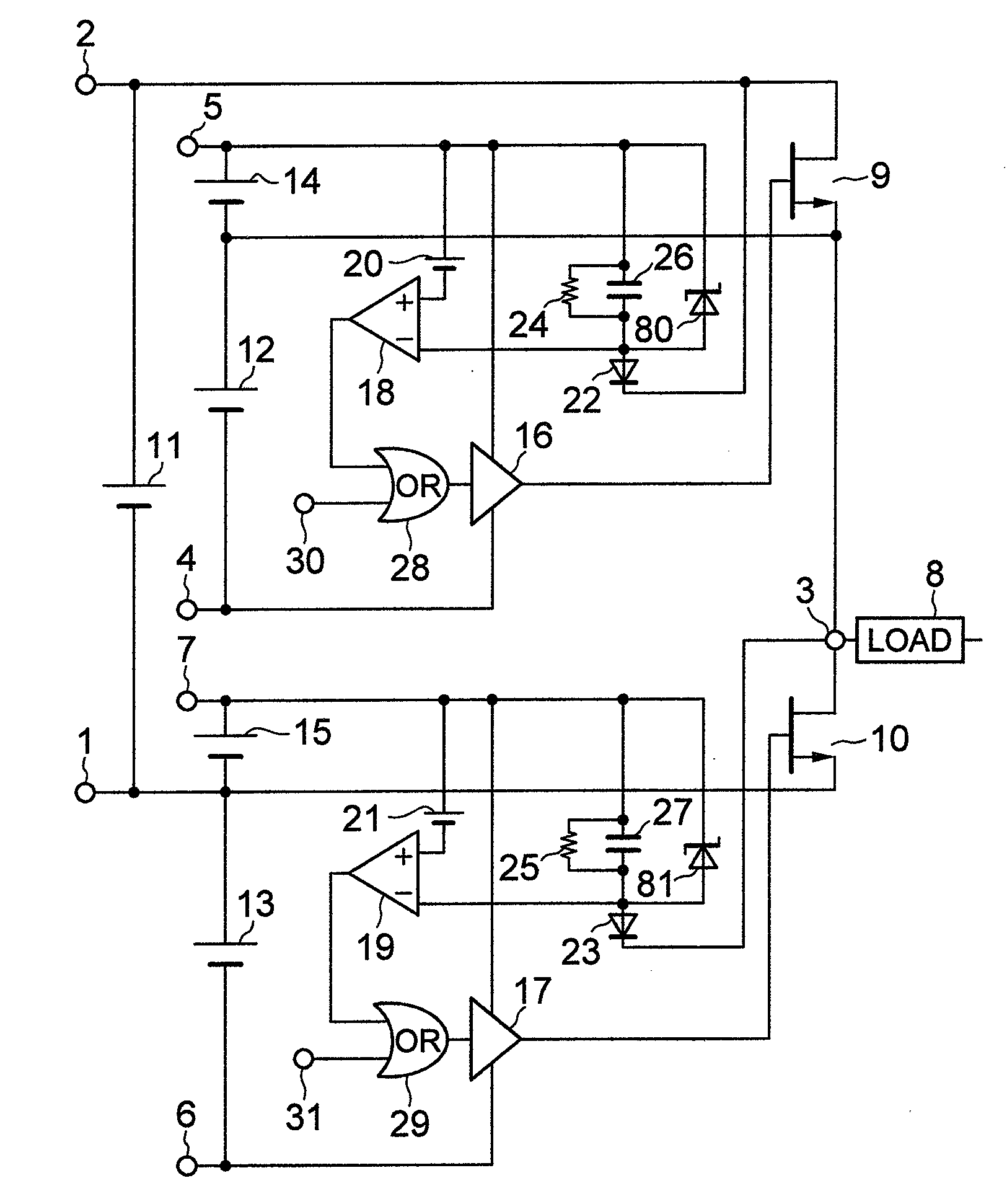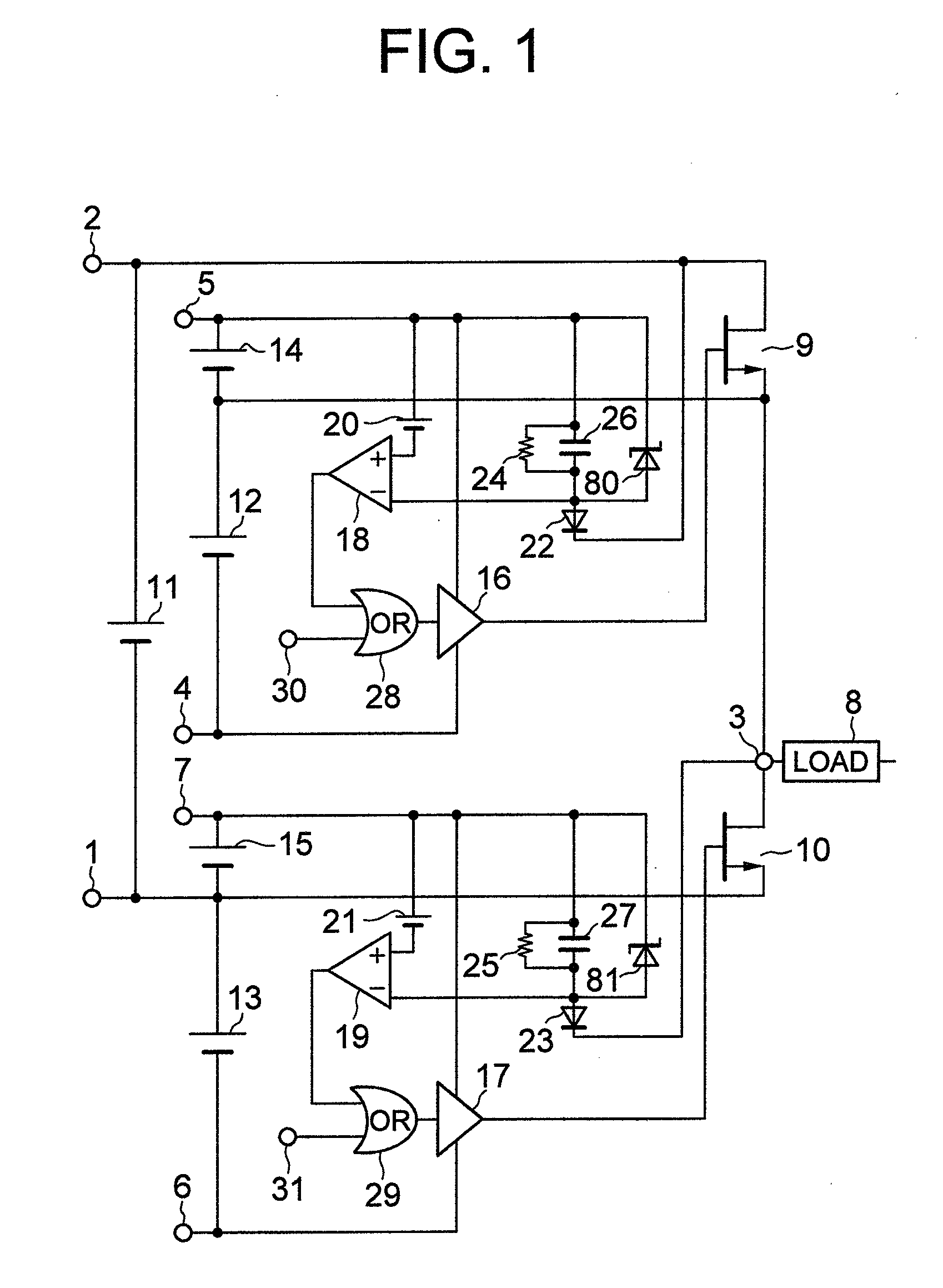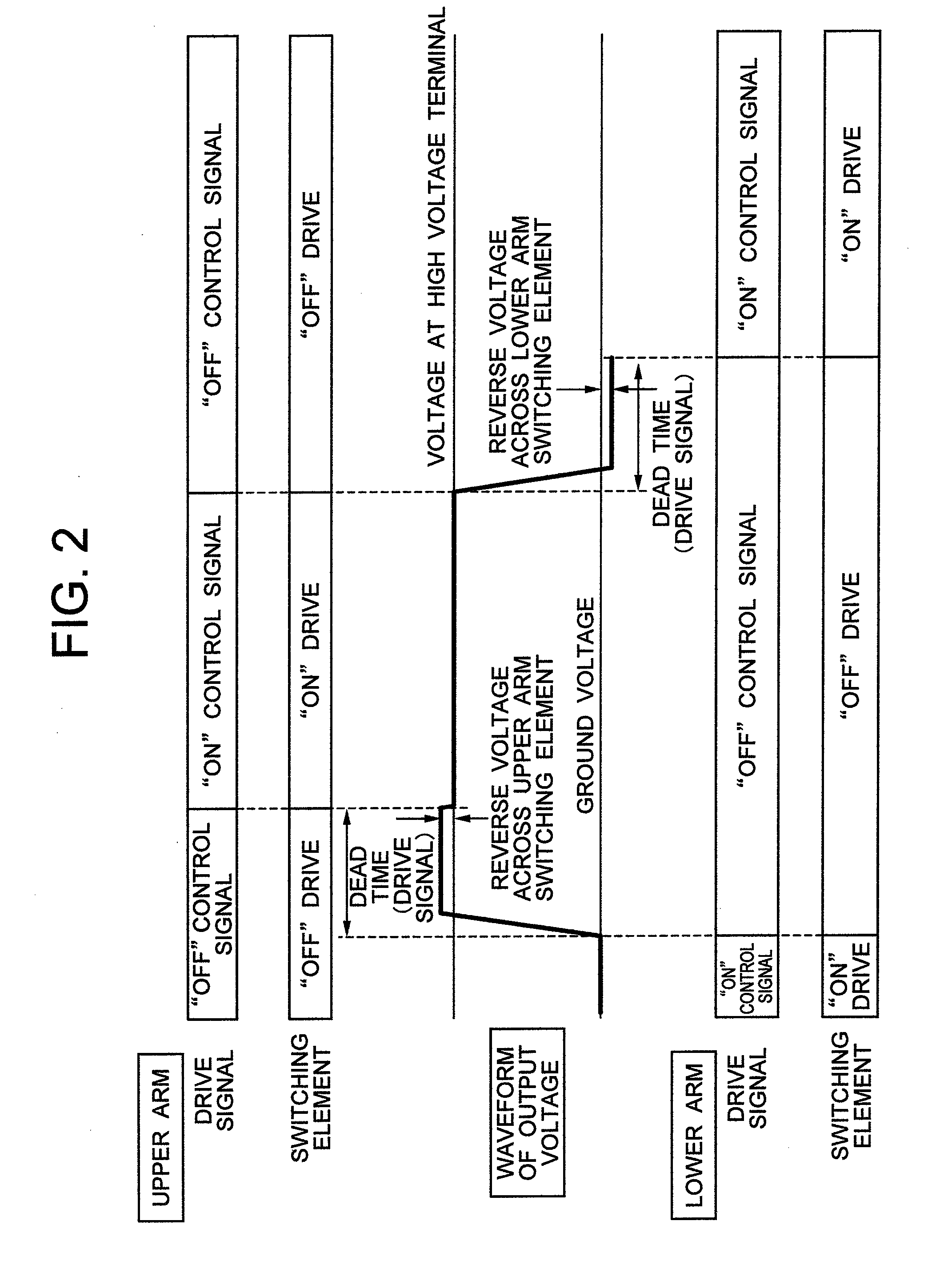Semiconductor circuit
a technology of semiconductors and circuits, applied in the direction of pulse techniques, instruments, process and machine control, etc., can solve the problems of power loss, affecting the operation of the whole system, and destroying the power switching elements and sometimes the whole system, so as to prevent an erroneous operation, reduce power loss, and reduce the effect of loss
- Summary
- Abstract
- Description
- Claims
- Application Information
AI Technical Summary
Benefits of technology
Problems solved by technology
Method used
Image
Examples
embodiment 1
[0040]FIG. 1 shows a semiconductor circuit as a first embodiment of this invention, FIG. 2 shows a diagram for illustrating how an example of the conventional drive system operates, and FIG. 3 shows a diagram for illustrating how the semiconductor circuit shown in FIG. 1 operates. This embodiment is described below on the assumption that the drive period is long, the inductive energy stored in the load while the “on” pulse is being applied is released, and no backflow current exists at the end of the “on” pulse. It is also assumed in the following description that the power switching element 9 of the upper arm and the power switching element 10 of the lower arm are n-channel JFETs (junction type field effect transistors) in most cases. However, this assumption does not mean the exclusion of the use of other power switching elements such as power MOSFETs or bipolar transistors in place of the JFETs.
[0041]The semiconductor circuit shown in FIG. 1 has a ground terminal 1, the high volt...
embodiment 2
[0053]FIGS. 4 and 5 show diagrams for illustrating how a semiconductor circuit as the second embodiment of this invention operates when the output voltage rises and falls, respectively. The semiconductor circuit as this second embodiment is the same as the semiconductor circuit shown as the first embodiment in FIG. 1, but characterized in that the synchronous rectifying drive is initiated before the end of the switching period. It is therefore possible to eliminate the period during which the voltage at the output terminal 3 rises far above the voltage of the high voltage source and falls far below the ground voltage, after the end of switching. This way of driving can be effected by suitably choosing the values of the reference voltages 20, 21 applied to the positive terminals of the comparators 18, 19. Alternatively, the same way of driving can be realized, as described above in the first embodiment, by determining the condition for the synchronous rectifying drive due to the firs...
embodiment 3
[0055]FIG. 6 shows a semiconductor circuit as a third embodiment of this invention. In this embodiment, state holding circuits are provided after the output terminals of the comparator 18, 19 to fulfill the intended purpose. Namely, diodes 100, 101, resistors 96, 97, and capacitors 98, 99 constitute the state holding circuits. The state holding circuits provided before the negative terminals of the comparator circuits 18, 19 as shown in the first embodiment in FIG. 1 are also employed in this embodiment so as to enhance the precision in the operation of the state holding circuits. However, one of the state holding circuits provided before and after each comparator circuit may be dispensed with.
[0056]This embodiment can enjoy the same advantage as the first embodiment can.
PUM
 Login to View More
Login to View More Abstract
Description
Claims
Application Information
 Login to View More
Login to View More - R&D
- Intellectual Property
- Life Sciences
- Materials
- Tech Scout
- Unparalleled Data Quality
- Higher Quality Content
- 60% Fewer Hallucinations
Browse by: Latest US Patents, China's latest patents, Technical Efficacy Thesaurus, Application Domain, Technology Topic, Popular Technical Reports.
© 2025 PatSnap. All rights reserved.Legal|Privacy policy|Modern Slavery Act Transparency Statement|Sitemap|About US| Contact US: help@patsnap.com



